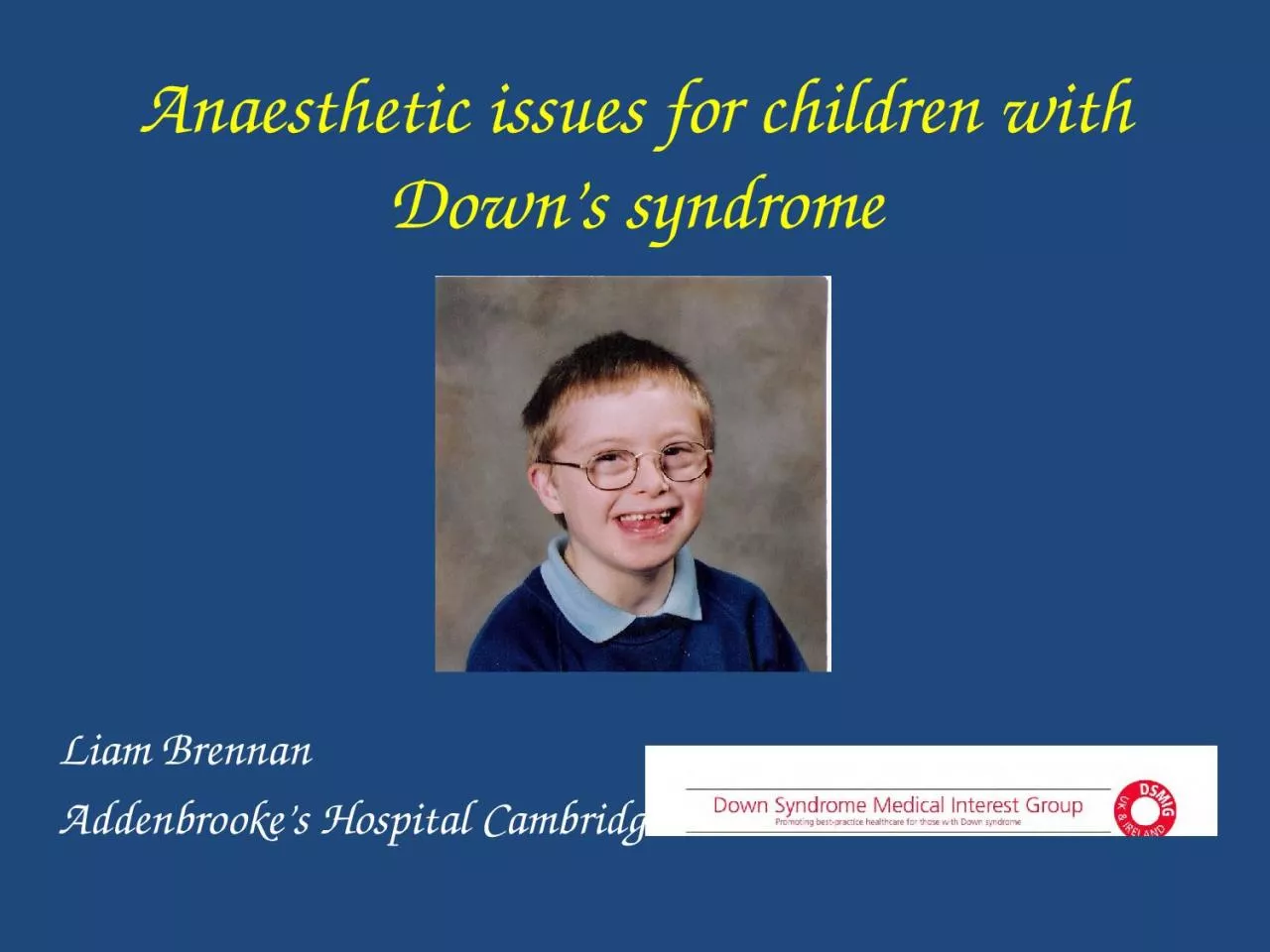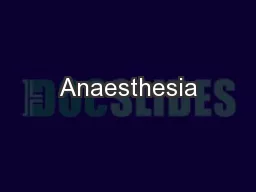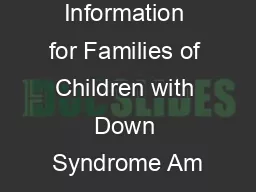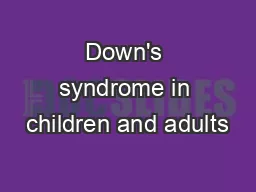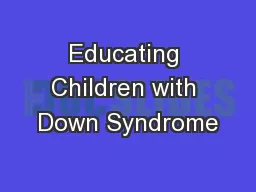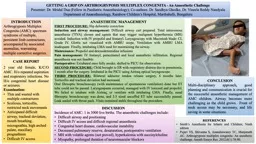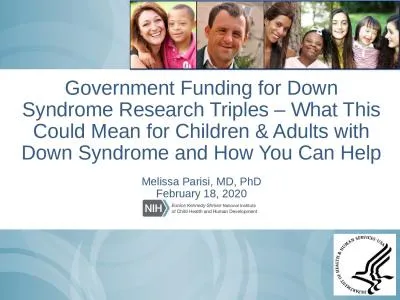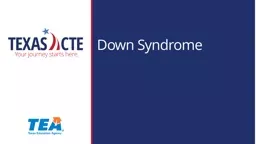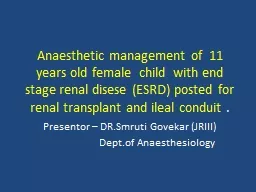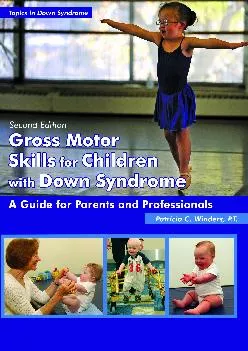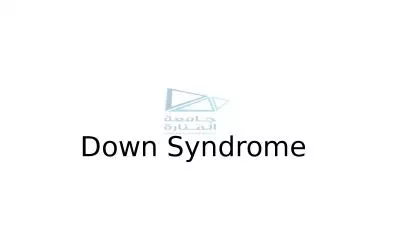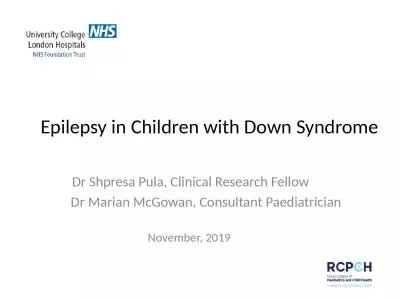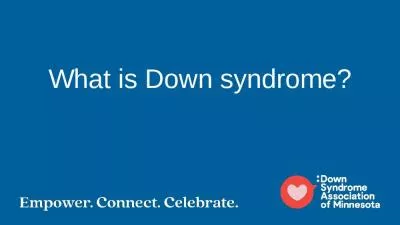PPT-Anaesthetic issues for children with Down’s syndrome
Author : abigail | Published Date : 2023-11-17
Liam Brennan Addenbrookes Hospital Cambridge Addenbrookes Hospital founded 1766 Moved to current site late 1970s Serve population of 15 million lt 16 years old
Presentation Embed Code
Download Presentation
Download Presentation The PPT/PDF document "Anaesthetic issues for children with Dow..." is the property of its rightful owner. Permission is granted to download and print the materials on this website for personal, non-commercial use only, and to display it on your personal computer provided you do not modify the materials and that you retain all copyright notices contained in the materials. By downloading content from our website, you accept the terms of this agreement.
Anaesthetic issues for children with Down’s syndrome: Transcript
Download Rules Of Document
"Anaesthetic issues for children with Down’s syndrome"The content belongs to its owner. You may download and print it for personal use, without modification, and keep all copyright notices. By downloading, you agree to these terms.
Related Documents

